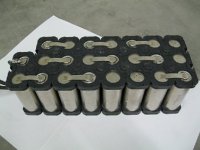grindz145
1 MW
I ran across this post on Engadget today:
http://www.engadget.com/2009/11/09/powergenix-nizn-rechargeable-aa-batteries-finally-some-cells-w/
And I got to searching the forums to see if anyone had built a pack up with this chemistry. I didn't find any mention of anyone who had actually build an pack out of these cells just some PR crap:
http://endless-sphere.com/forums/viewtopic.php?f=14&t=3741&hilit=+nizn
But with the reasonable energy , good power density, and a very reasonable cost I would imagine someone has given these a chance.
Anyone with hands-on experience with this chemsitry?
http://www.engadget.com/2009/11/09/powergenix-nizn-rechargeable-aa-batteries-finally-some-cells-w/
And I got to searching the forums to see if anyone had built a pack up with this chemistry. I didn't find any mention of anyone who had actually build an pack out of these cells just some PR crap:
http://endless-sphere.com/forums/viewtopic.php?f=14&t=3741&hilit=+nizn
But with the reasonable energy , good power density, and a very reasonable cost I would imagine someone has given these a chance.
Anyone with hands-on experience with this chemsitry?



